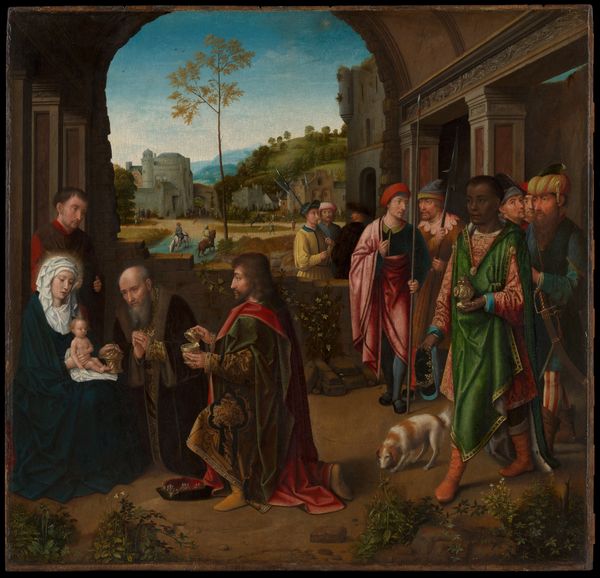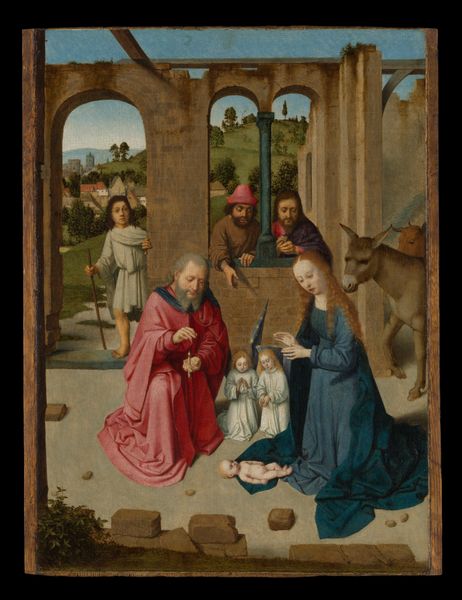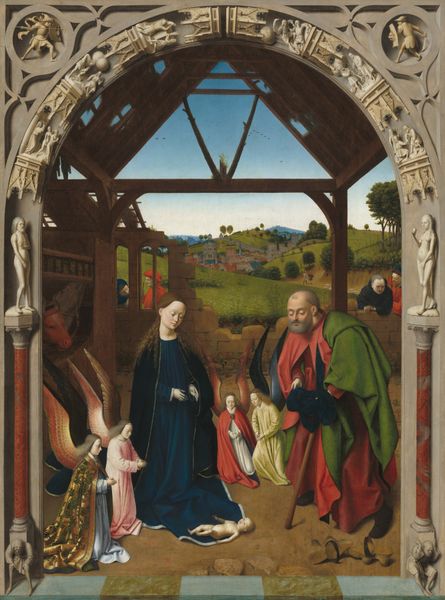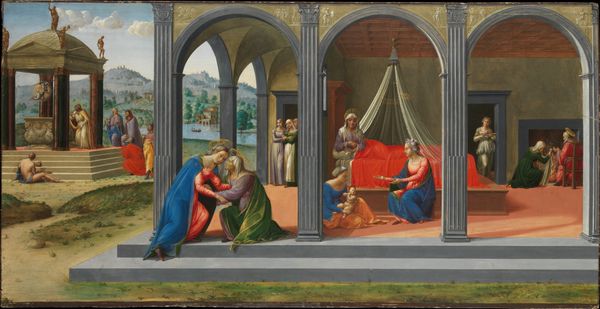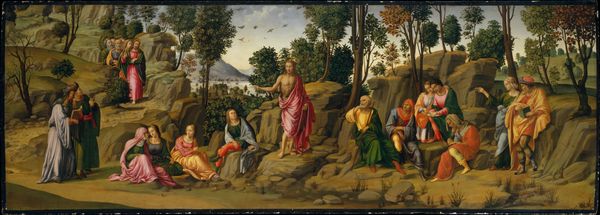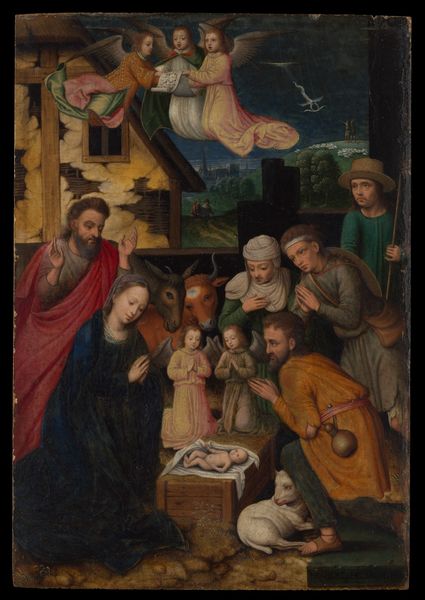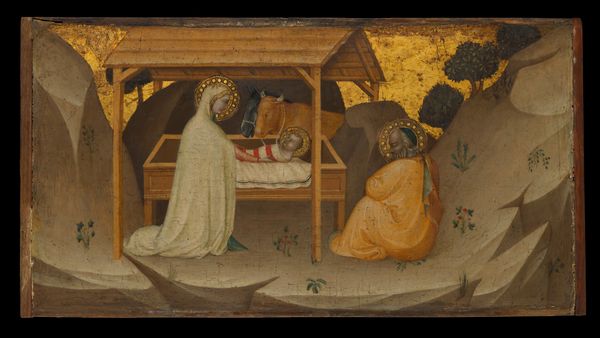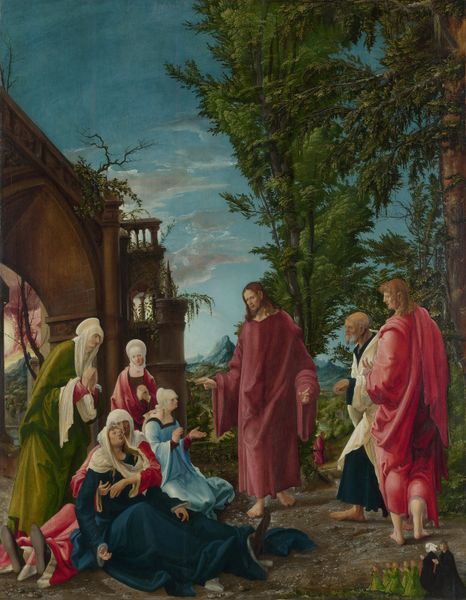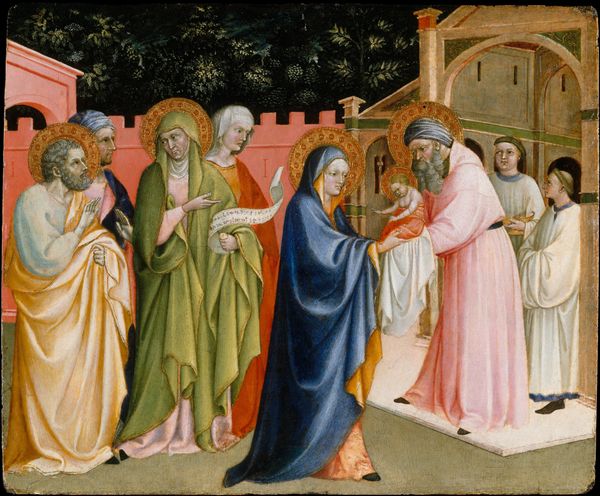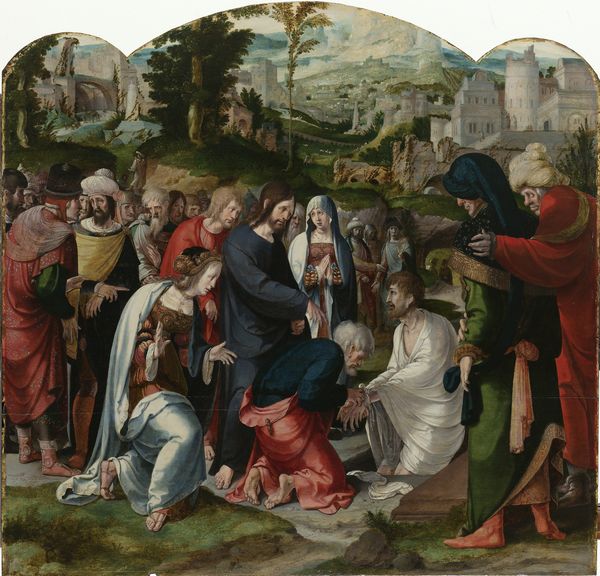
oil-paint
#
oil-paint
#
landscape
#
figuration
#
oil painting
#
genre-painting
#
history-painting
#
italian-renaissance
#
virgin-mary
Dimensions: 49 1/2 x 81 3/4 in. (125.7 x 207.6 cm)
Copyright: Public Domain
Curator: Gazing upon this, one immediately feels transported. There's a unique stillness, wouldn’t you agree? Editor: Absolutely. Let's delve into it. What we have here is "The Adoration of the Shepherds," a painting that's been attributed to Catena, or Vincenzo di Biagio, dating roughly from 1506 to 1531. You can find this oil on panel here at the Met. Curator: I am struck by the shepherd. The animal he is bringing with him appears small and could easily be mistaken as a sign of disrespect. Editor: The humble shepherd embodies the common person. He is painted on the path, bringing the viewer closer, sharing a bond with the viewer that is much more important than courtly respect. This is amplified in how Catena represents him; a simplified color pallet shows that this character does not believe his outer appearance matters much. It's all about internal purity. Curator: And the Holy Family is painted with soft clothing, especially the blue dress of the virgin, a key symbol. However, looking closer, the shepherd seems to also point his rod and the viewers gaze back into a far reaching but unimpressionable distance where some buildings or city on a hill are located. Editor: Ah, but the building set in the distance and is almost a ghost or facade with what really matters on display, the humility of the holy family and the devotion that ordinary figures bring to this moment of adoration. It makes sense from an institutional and patronage perspective too, no? To show power derived from the common devotional actions that bring meaning and status? Curator: I hadn’t thought of it quite that way, the idea that devotion and a personal bond supercedes other worldly claims! Instead the piece seemed a straightforward, but rather pleasant celebration of pastoral piety. The use of landscape definitely draws attention. Editor: It does and I believe that the Italian Renaissance emphasis on realism draws more out of those elements. And I feel there is so much more hidden in these objects and settings, if one is to truly grasp it's meaning. Curator: Well, thank you for uncovering those hidden aspects. I’m keen to now look into it from a positionality point of view, to find where devotion is expressed on the personal and structural levels. Editor: Indeed! Hopefully, together we have shone some new light on "The Adoration of the Shepherds".
Comments
No comments
Be the first to comment and join the conversation on the ultimate creative platform.

